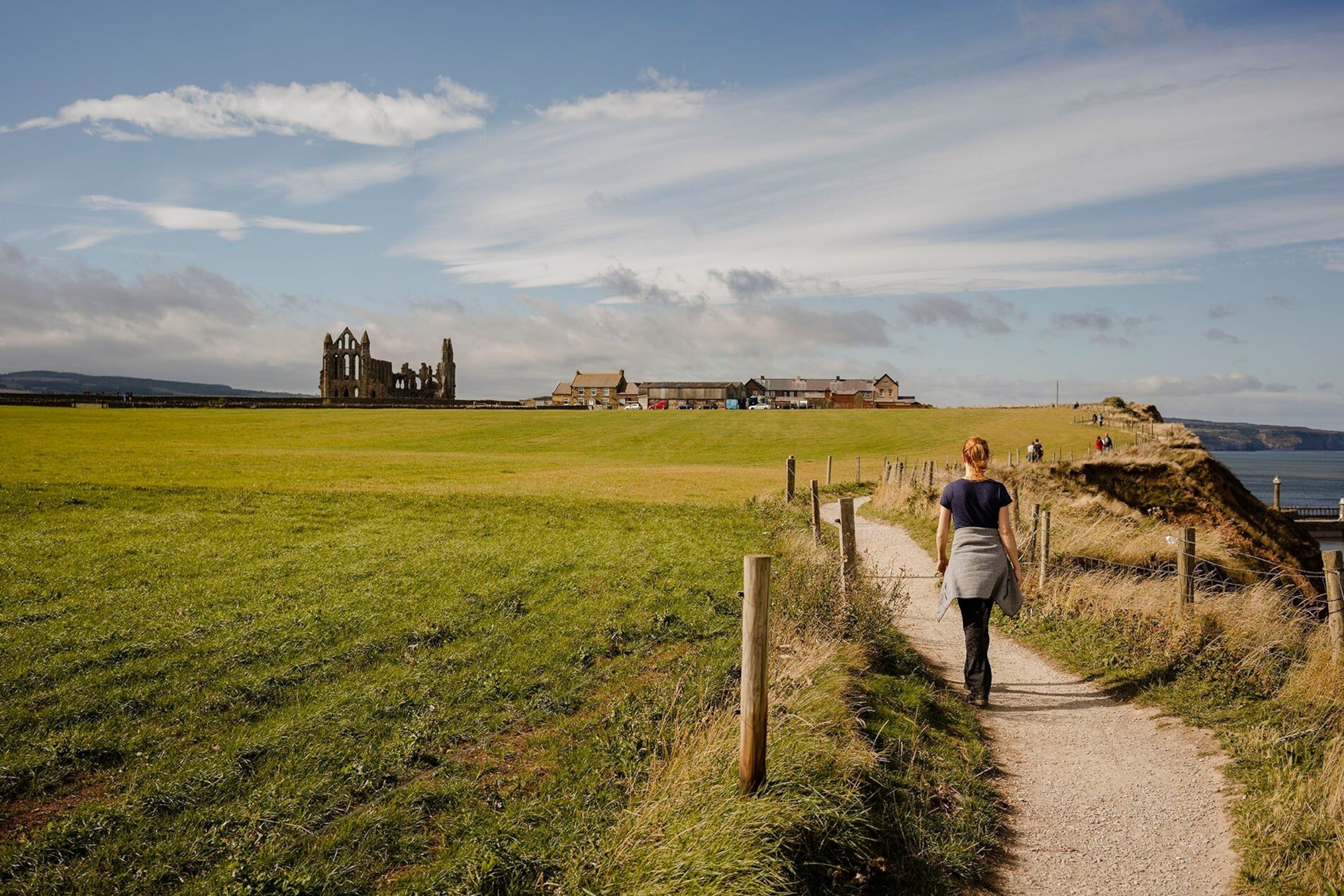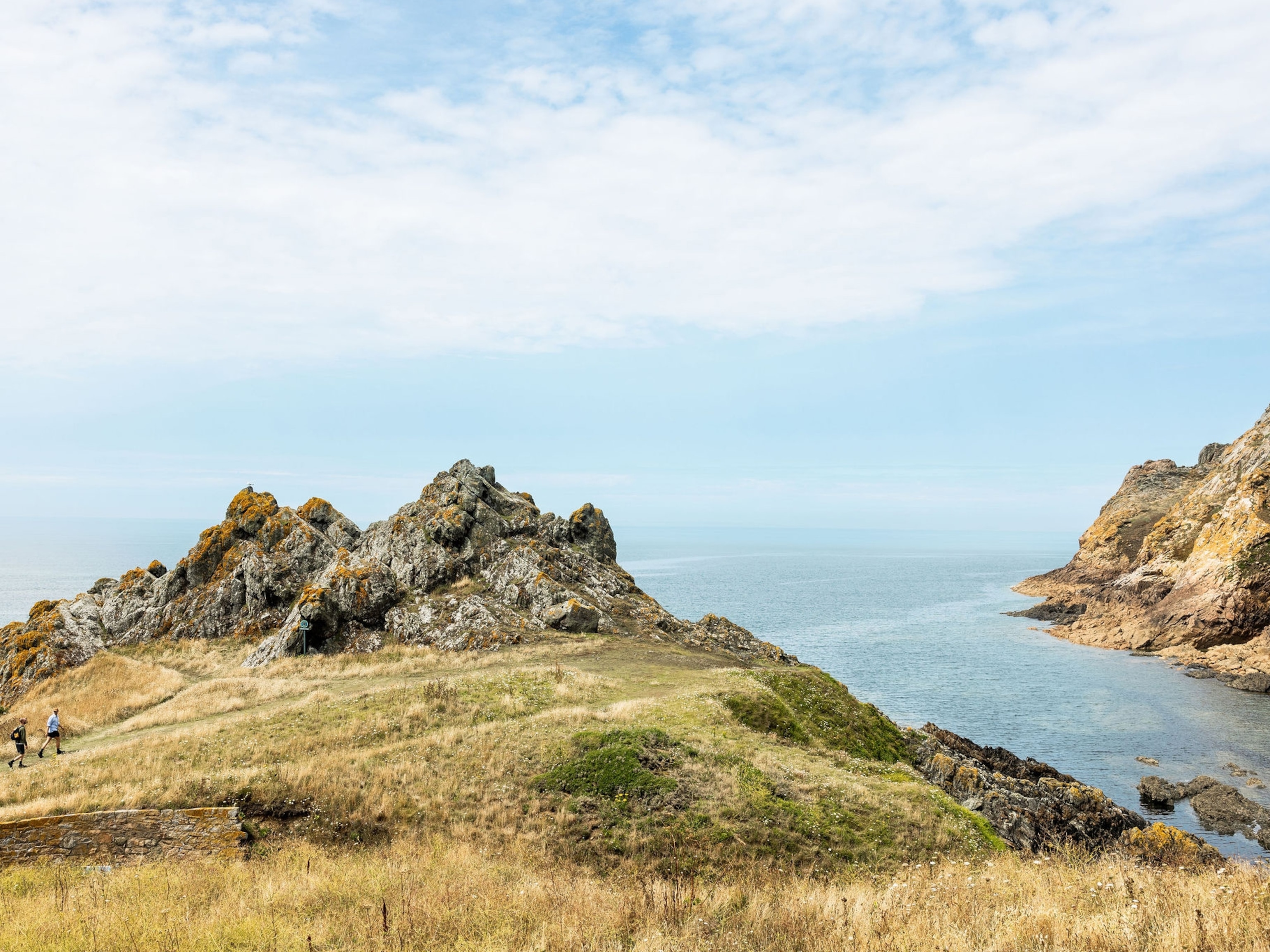
How to plan a hike along Yorkshire’s Whitby Way
Ghostly abbeys, forested hills and literary heritage colour the landscape on this trail through the wilds of North Yorkshire.
Running for 70 miles, the Whitby Way winds its way from the Gothic jewel of York Minster, through wild moorland and ancient wooded valleys, right up to the coast, and the ghostly ruins of Whitby Abbey.
Originally a pilgrimage route, the seven-day hike is best tackled with overnight stays in village B&Bs, before setting off into a landscape haunted by folklore and mythology; the eerie ruins at Byland and Rievaulx have inspired countless ghost stories, while the atmospheric remains of Whitby Abbey moved Bram Stoker to create his masterpiece, Dracula. The route takes in another site of literary interest at Coxwold, where Laurence Sterne wrote his experimental novel Tristram Shandy.
But for all its historic and cultural curiosities, the real glory of the Whitby Way lies in its landscapes: the windswept moorlands, a riot of purple heather in late summer; the quiet valleys alive with wildflowers in spring; and the River Esk, which teems with leaping salmon in the autumn.
1. York Minster
An appropriately awe-inspiring starting point, York Minster is one of the largest and most sublime gothic cathedrals in Europe. Admire the exquisite stained-glass windows depicting Adam and Eve in the Garden of Eden, as well as apocalyptic scenes from the Book of Revelation, then descend to the subterranean chambers of the Undercroft. Here, a cutting-edge museum tells the story of York’s history, from the Romans through to the Vikings and Normans, and up to the present day.
2. Coxwold
A two-day hike through the rolling countryside and woodland of the Howardian Hills ends in the exceedingly pleasant village of Coxwold, where handsome 17th-century houses line the road to St Michael’s Church. During the 1760s, the curate here was Laurence Sterne, author of the avant-garde novel Tristram Shandy. Sterne lived and wrote in the nearby Shandy Hall — tour the writer’s rooms, and spot goldfinches and sparrowhawks from the gardens.
3. Byland Abbey
Ramble across fields to Byland Abbey, a striking Cistercian ruin abandoned during the Dissolution. Unearthed here was a tome of medieval ghost stories written by one of the monks – wandering through the haunting ruins, you’ll get a sense of the atmosphere that inspired him. The monk wrote of ghoulish revenants rising from their graves to terrorise the villagers; perhaps he was moved by the same spirit novelist Bram Stoker felt at Whitby, further down the trail.
4. Rievaulx Abbey
The half-day hike from Byland is rewarded by magnificent views of Rievaulx Abbey emerging from the mist-wreathed woodlands of the Rye Valley. In the 12th century, this was among the wealthiest monasteries in England, though the Cistercian monks who called it home lived a life of devout penury. Today it’s an atmospheric ruin, but is also home to a fantastic museum and cafe; try traditional dishes like monk’s pottage stew and mead honey cake.
5. Esk Valley
As you descend from the wild and weather-beaten moors north of Rievaulx, the path bends to the gently curving banks of the River Esk and becomes enclosed overhead by forests of alder and ash. Don’t miss the centuries-old stepping stones across the river itself at Egton Bridge. The wooden waymarkers along this stretch of the path depict a salmon in mid-leap – a common sight here in November, particularly from the bridge in the village of Sleights. Spend the night in Glaisdale before setting off on the route’s final leg.
6. Whitby
The sight that awaits you at the end of the trail is one of the most dramatic in England: the ghostly ruins of Whitby Abbey, crumbling elegantly on a clifftop against the steely blue of the North Sea. Ascend the 199 steps to the graveyard of St Mary’s Church — just as Bram Stoker’s Count Dracula did in the form of a spectral dog — before heading down to the waterfront for a well-earned portion of Whitby’s famous fish and chips.
Did you know?
The ruggedly beautiful Saltwick Bay, just east of Whitby, is one of very few places in Britain where you can watch the sun rise and set from the same position.
Published in the June 2021 issue of National Geographic Traveller (UK)
Find us on social media
Facebook | Instagram | Twitter





